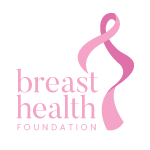Any woman (and even men) can get Breast Cancer, which is why it is so important to know about the disease and all potential treatments. It is often not clear why some people get cancer and others do not. The more we learn about the disease, the better we get at curing or managing it.
What is cancer?
It is natural in life that we are all born, grow and all eventually die. The cells that make up our bodies are just the same. Each cell in our bodies also has its own life cycle which involves multiplying, growing and eventually dying in a process called ‘apoptosis’.
In cancer, some of the cells of the body will misbehave and do not carry out their normal cycle. They will continue to grow and multiply, but will not die. Eventually they will spend all of their time multiplying and none of their time working as normal cells do, which leads to the growth of a tumour. This tumour invades the normal cells and tissue making new blood cells to feed its growth, enabling it to spread elsewhere.
Eventually the tumour decides to break up and uses the bloodstream and lymphatic cleaning system of the body to travel to distant parts of the body, such as the brain, the bones, the liver and the lungs. There, these small cancer cells will settle and begin to multiply in their new position, destroying the normal functional tissue in that area. These are called ‘metastases’ and the increase in these tumours will eventually lead to death.
Is Breast Cancer common?
Breast Cancer is the most common cancer to affect women worldwide. There is no adult woman, population or culture that is free from the risk of getting Breast Cancer. The rates of cancer vary throughout the world, from 1 in 8 women in the United States to much less in Japan and the Far East. There are not accurate statistics for the prevalence of Breast Cancer in South Africa, but we think they may be similar to those in the United States because we have a similar diet and lifestyle.
Worldwide, Breast Cancer is also the leading cause of cancer deaths in women, although there has been a dramatic decrease in cancer deaths over the past 40 years due to increased awareness and increased screening of women.
Who gets Breast Cancer?
Anyone with breast tissue can develop a breast cancer. Women of every age are at risk, from the very young to very old, all races and cultures, people from all walks of life, rich or poor, healthy or unhealthy, insured or uninsured – even men can get breast cancer! A woman younger than 40 has a risk of approximately 1 in 230 of getting breast cancer, with this figure rising to 1 in 29 after the age of 65.
Most women (more than three quarters) do not have any of the factors that put them at high risk for breast cancer. 25% have family history of breast and other cancers on both the father and mother side of the family. With the remaining 10% having recognized genetic mutations. Breast cancer happens when your cells decide to stop behaving normally and start multiplying irregularly and progressively.
Many women who get breast cancer ask “Why me? What did I do to cause this?” An understandable question, but the answer is: “Nothing.” There is no single cause of breast cancer and no single event that will bring it on. There is nothing any women does or doesn’t do to cause breast cancer. It is simply an unfortunate event of life which we can manage through early diagnosis and treatment.
Women of every age are at risk, including young women in their late teens, 20s or 30s.
How treatable is Breast Cancer if caught early?
All breast cancer is treatable and there are good options for management and cure irrespective of the size of the tumour when found. When breast cancer is detected early, before it invades tissues outside of the breast, the cure rate can be as high as 95%.
Breast cancer that has not invaded the breast tissue but is still in the ducts (known as carcinoma in-situ) has a 99% cure rate. Surgery alone maybe appropriate enough treatment, or even medication alone If cancer invades the breast tissue, but does not spread to the glands, and it also has a very good prognosis. The treatment of cancer is tailored more and more to the ‘personality’ of the cancer i.e. how it behaves and what it responds to, not the size alone nor age of the patient.
Do chances of survival drop (and by how much?) if caught later?
When cancer remains confined to the breast it is easier to treat, and chances of recovery are greater. Patients do not die of cancer when it is confined to the breast. It is the spread of cancer to the brain, bones, liver and lungs which will eventually cause problems. The aim of breast cancer awareness and screening is to catch breast cancer early before it can escape the breast, break through the lymph glands under the arm (the security guards of the breast) and spread from there to the rest of the body.
Cancer cells can hide away and reappear in the future. Many of the more aggressive types of treatment for breast cancer, such as chemotherapy, are based around catching and killing these spreading cells. Even if the cancer has spread to the bones, with various oncology treatments, up to 75% of patients could be living five years after diagnosis.
Even if the cancer has spread to the bones, up to 75% of patients may still be alive in five years after diagnosis.
